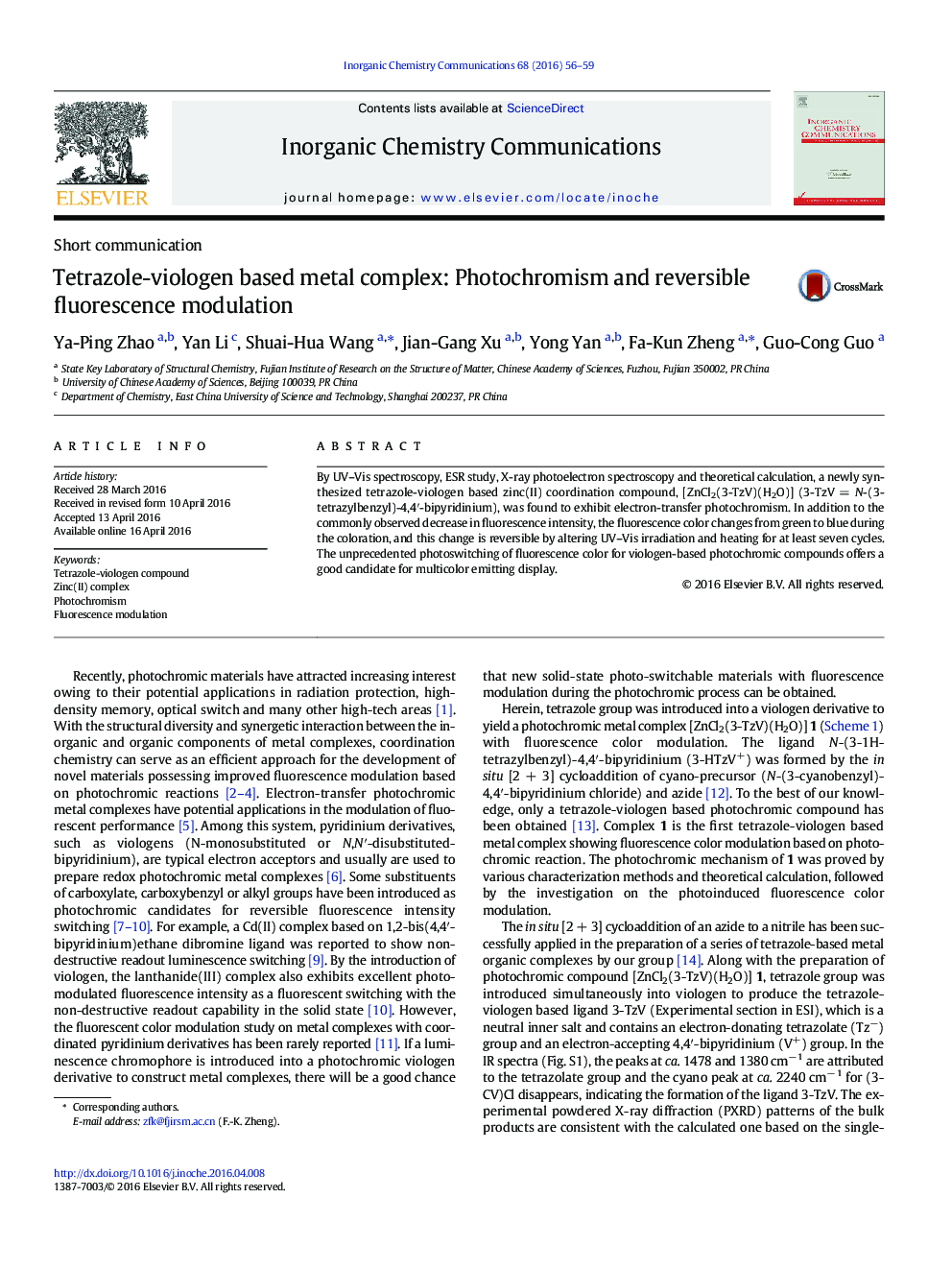| Article ID | Journal | Published Year | Pages | File Type |
|---|---|---|---|---|
| 1305262 | Inorganic Chemistry Communications | 2016 | 4 Pages |
•Tetrazole-viologen based metal complex [ZnCl2(3-TzV)(H2O)] 1 was hydrothermally synthesized and structurally characterized.•The photochromic mechanism of 1 was investigated experimentally and theoretically.•Complex 1 shows a reversible photochromic fluorescence modulation.
By UV–Vis spectroscopy, ESR study, X-ray photoelectron spectroscopy and theoretical calculation, a newly synthesized tetrazole-viologen based zinc(II) coordination compound, [ZnCl2(3-TzV)(H2O)] (3-TzV = N-(3-tetrazylbenzyl)-4,4′-bipyridinium), was found to exhibit electron-transfer photochromism. In addition to the commonly observed decrease in fluorescence intensity, the fluorescence color changes from green to blue during the coloration, and this change is reversible by altering UV–Vis irradiation and heating for at least seven cycles. The unprecedented photoswitching of fluorescence color for viologen-based photochromic compounds offers a good candidate for multicolor emitting display.
Graphical abstractA new tetrazole-viologen based metal complex [ZnCl2(3-TzV)(H2O)] 1 (3-TzV = N-(3-tetrazylbenzyl)-4,4′-bipyridinium) has been hydrothermally synthesized, which exhibits reversible electron-transfer photochromism by alternating UV–Vis light irradiation and heating. Reversible fluorescence intensity and color modulation have also been realized during the photochromic process.Figure optionsDownload full-size imageDownload as PowerPoint slide
